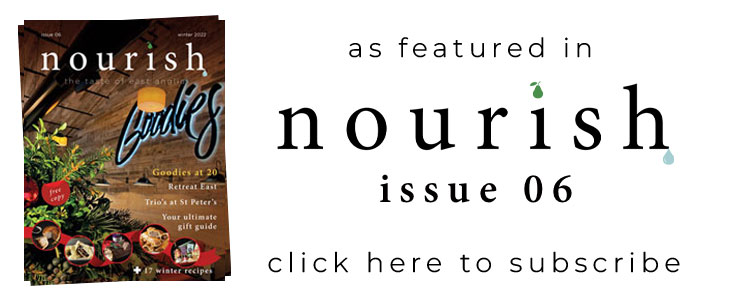In October, Samantha Mattocks travelled to the historical country of Jordan. Bordering Israel, Syria, Saudi Arabia, the Red Sea, Palestine, and Iraq, Jordan has six UNESCO World Heritage sites. Visiting for work, Samantha’s trip also allowed plenty of time to explore this beautiful country, famed for Lawrence of Arabia and its incredible hospitality.
Jordan is among my top three favourite countries in the world, and I was keen to return after a break of many years. For the first part of my trip, I was based in Jordan’s capital, Amman. This is a very tolerant Middle Eastern city – as is the whole of the country – and Jordan is a beautiful blend of Muslim and Christianity; it is not unusual to see a mosque next to a church as you travel around.
We were part of a group of people visiting for an Arabian horse conference, and pre- and post-conference tours were organised. The first of these saw a trip to Al Ma’wa Animal Sanctuary for Nature and Wildlife, an hour north of Amman. Founded by HRH Princess Alia and Vier-Pfoten International, this is the only animal sanctuary in the Middle East. Relying on donations from the public, Al Ma’wa rescue animals affected by war and abandoned on international borders. They keep the animals as naturally as possible, and their individual stories are heart-breaking; this visit had a lasting effect on us all.
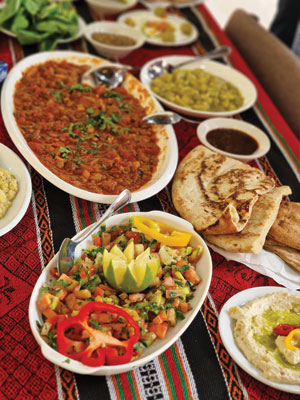
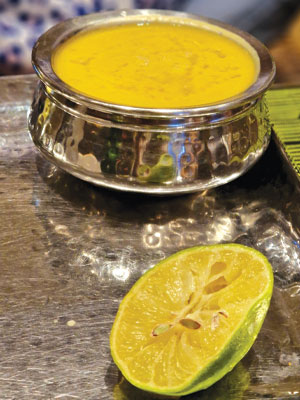
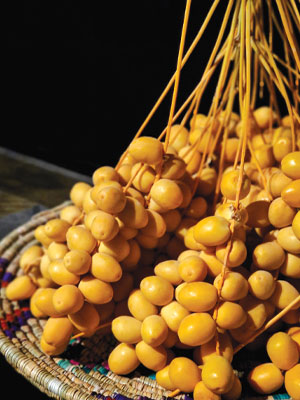


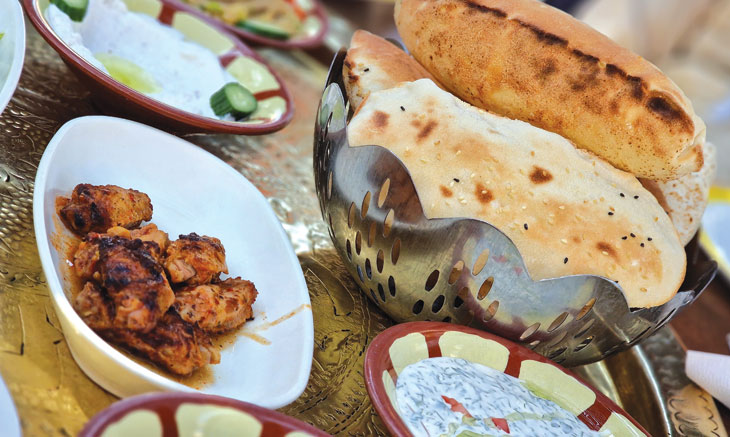

We then went to Jerash, one of the best preserved Greco-Roman cities in the Middle East. This city’s rich history goes back over 6500 years and is one of the most complete Roman cities in existence outside of Italy. Found 30 miles north of Amman, Jerash used to be one of the wealthiest and most cosmopolitan cities in the Near East. They are still working on uncovering and restoring the city, with most of the city remaining buried, but what you can see is just remarkable.
The following day, we went to Mount Nebo and the Byzantine church of Saint George in Madaba. Mount Nebo is a sacred mountain standing almost 1,000 metres high, overlooking the River Jordan and the Dead Sea, with Jerusalem in the distance, among many other sites of significance. Mount Nebo is believed to be the place where Moses stood to view the sacred Promised Land and in the 4th century. Egyptian monks built a small church on the mountain peak in memory of Moses, converted into a basilica a century later. Inside as some of the best preserved and most beautiful mosaics in Jordan, depicting wildlife and local customs from the Byzantine era. Outside is the famed Brazen Serpent Sculpture, created by the Italian artist Fian Paolo Fantoni. The sculpture recalls the bronze serpent on a pole that God told Moses to erect to protect his people from the poisonous snakes that God himself had sent as punishment.
Then it was to St George’s Chapel, home to The Madaba Map/Madaba Mosaic Map found in the floor of this early Byzantine church. The map depicts part of the Middle East and contains the oldest surviving original cartographic depiction of the Holy Land and especially Jerusalem. The church was spellbinding, and all around were depictions of St George and the Dragon – England’s patron saint and regarded throughout the Middle East as being a saint and prophet.
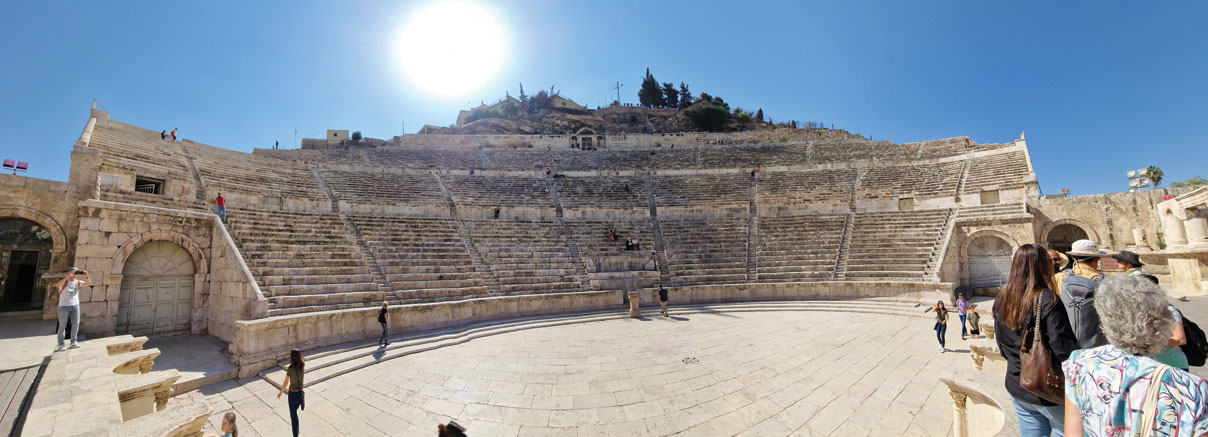
The final tour this side of the conference was to Ancient Amman. In the middle of the hustle and bustle of Jordan’s capital are amphitheatres, temples, and more, including a Roman Amphitheatre, built in the 2nd century that can hold 6,000 people. Most impressive was the Citadel, dating back as far as far as the Bronze Age and built atop one of Jebel Al Qala’a, Amman’s seven hills. The view was simply breath-taking, as were the Roman and Islamic ruins found here. The Temple of Hercules, built by the Romans, is the most prominent feature on Citadel Hill, closely followed by an early Byzantine Church plus the remains of Umayyad Palace. One visit was not enough!
After the conference, we headed south to the UNESCO World Heritage Site at Petra. Again, this ancient city dates back to the 4th century BC and is located 150 miles south of Amman and Jerusalem. Petra was an ideal hub for commerce and when the Romans came to Jordan in 106 AD, they were jealous of the success of Petra and set up a new highway and shutting off the water supply to the Nabateans – the ancient Arab people who discovered Petra and made it what it was. By the 8th century, Petra was largely abandoned only to be rediscovered a thousand years later. ‘The Lost City’ is so incredibly special and visiting this rose-red city is a unique experience. We also went to Little Petra, the entrance to Petra and a haven of bliss. Built around the 1st century AD, with high sides, temples and caves, there are so many similarities to the main Nabatean city, but here I found a peace and soulfulness that lingered long after we left.

Then it was, for me at least, bucket list time as we drove to Wadi Rum, also a UNESCO World Heritage Site, dubbed the ‘Valley of the Moon’. Wadi Rum is a protected area covering 720 square kilometres of desert wilderness. Famed for being where Laurence of Arabia lived, this vast desert and mountain landscape stirred the soul. Opportunities for activities here are endless, and we enjoyed stargazing, 4×4 desert riding and sunset chasing, camel and horse riding, and slept in a bubble tent with a clear section in the top to watch the stars in the night. A foodie highlight was a traditional Bedouin dinner cooked on a Zarb – an underground oven used by nomadic herding people in the Arabian Peninsula. A hole is dug in the soft sand, then wood and coal are lit in it with the food placed on top. They then covered this for several hours before carefully uncovering the food and sharing it; it was delicious!
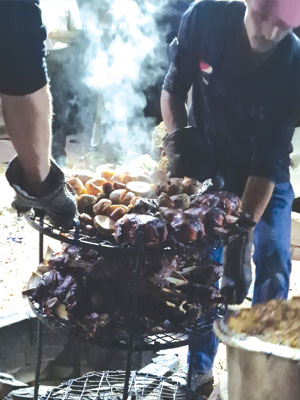
traditional Bedouin cooking
The penultimate stop was to Jordan’s only coastal town, Aqaba, located on a semi-enclosed inlet of the Indian Ocean between Africa and Asia. With Israel and Egypt clearly visible across the waters, we went on a two-hour boat cruise that also offered opportunity for diving and snorkelling. Historically, we visited Aqaba Fort, dating back to the Mamluks in the early 1500s, and was used as a military base during the Arab Revolt. We also saw Ayla, an Islamic city built around 650 AD, uncovered during hotel development and is now a heritage site. After a flying stop at the souk, where I stocked up on aromatic spices, we went north to the Dead Sea, where we were treated to a beautiful sun setting over the lowest sea on earth above Jerusalem. Here, the tour ended, but we stayed an extra day and I enjoyed the many benefits of the Dead Sea salt and mud!
Jordan is a country with a remarkable history, much of which was preserved under the British Mandate. With some of the most welcoming people in the world everywhere you go, Jordan is a place that is relaxed, and you feel at ease. Alcohol is available in many hotels, although some are dry – check before you book – and they are rightly proud of their Middle Eastern food. I enjoyed Lebanese meze twice at different hotel restaurants, and some of the more popular hotels have a variety of western cuisine for those wanting a break from hummus, flatbreads, and kibbeh. Following the pandemic, Jordanians are keen for people to visit their country and fall in love with it. With so much to offer, from beach resorts to hiking, history to modernity, and all with the flavours of the Middle East around every corner, plan your trip now. You won’t be disappointed.
The details
- We flew from London Heathrow with British Airways, but Royal Jordanian also offers direct flights and great service.
- Our tours were arranged by Travellers International www.travellers.jo


